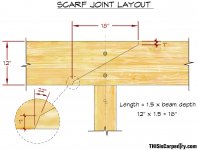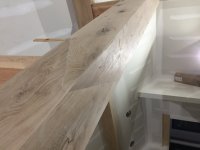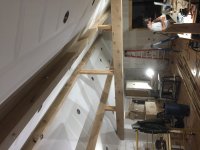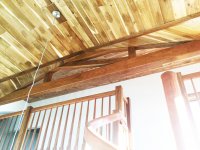Twoodman66
Member
- Joined
- Feb 27, 2016
- Messages
- 96
Hi All
I have this up coming project which includes wrapping the existing exposed beams with rustic white oak and mitered corners to simulate a beam. Runs are 3@ 35 lineal ft. And one @ 21. I'm struggling with what to do with my horizontal seams.
A. Plumb scarf
B. Butt joint with dowel
C. Angled scarf with high/low dowel
Any and all options and suggestions greatly appreciated
Thanks
I have this up coming project which includes wrapping the existing exposed beams with rustic white oak and mitered corners to simulate a beam. Runs are 3@ 35 lineal ft. And one @ 21. I'm struggling with what to do with my horizontal seams.
A. Plumb scarf
B. Butt joint with dowel
C. Angled scarf with high/low dowel
Any and all options and suggestions greatly appreciated
Thanks






